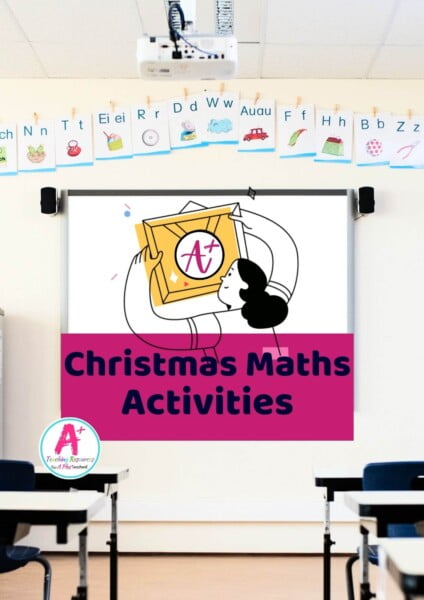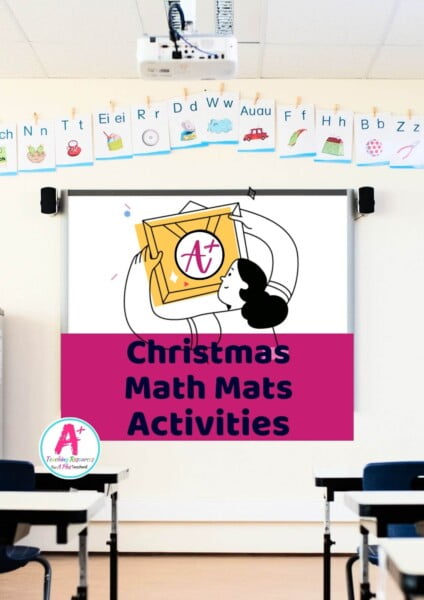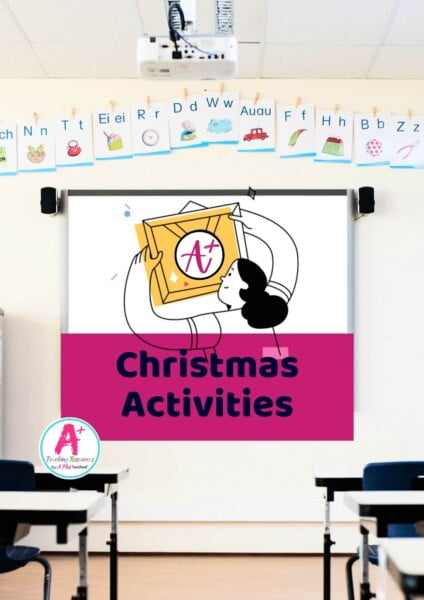Christmas Classroom Activities
Special Days Resources
Christmas is one of the most celebrated holidays around the world, rich with history, cultural diversity, and unique traditions. While many embrace this season with festive foods, gift-giving, and togetherness, it’s important to recognise that not everyone celebrates Christmas. Instead, people of different faiths and cultural backgrounds observe their own meaningful holidays, such as Hanukkah and Diwali.
This post explores the history and meaning of Christmas, celebrations around the globe, fun Christmas facts for kids, and a look at alternative holidays observed during the same season. These insights can enrich your classroom with lessons on inclusivity and cultural appreciation through engaging Christmas classroom activities.
A Brief History of Christmas
Christmas is celebrated on 25 December to honour the birth of Jesus Christ. Its origins blend early Christian traditions with pagan winter solstice festivals like Saturnalia. Over the centuries, customs such as decorating trees, singing carols, and exchanging gifts became integral parts of the holiday. Today, Christmas is celebrated by billions worldwide, transcending its religious roots to encompass universal values of love and kindness.
The Meaning of Christmas
Christmas symbolises hope, generosity, and togetherness. For Christians, it marks the birth of Jesus, seen as the saviour and a symbol of peace. For many, the holiday’s secular aspects—like family gatherings, festive meals, and acts of kindness—make it a cherished time of year. These universal themes resonate across cultures and inspire classroom discussions about empathy and community.
Christmas Celebrations Around the World
Christmas traditions vary widely across cultures, with unique foods, decorations, and customs defining the holiday in each country. Here are some festive highlights from around the globe:
1. Australia
In Australia, Christmas is celebrated in summer. Families enjoy outdoor barbecues with dishes like prawns, turkey, and pavlova (a meringue dessert topped with fruit). Carol events often take place under the stars, and many head to the beach for festive picnics.
2. United States
American Christmas is known for its grandeur—elaborate light displays, parades, and family feasts. Traditional foods include roast turkey, sweet potatoes, and pecan pie. Children leave cookies and milk for Santa Claus, adding a touch of magic to the celebrations.
3. United Kingdom
In the UK, families pull Christmas crackers at dinner, which contain paper crowns and jokes. Festive meals feature roast goose or turkey, stuffing, and Christmas pudding—a steamed dessert set aflame with brandy. Boxing Day, observed on 26 December, is another day of fun and relaxation.
4. Germany
Germany’s Christmas markets are world-famous, offering treats like stollen (fruit bread) and Glühwein (mulled wine). Advent calendars are a beloved tradition, and on 6 December, children receive gifts from St. Nicholas. Families often prepare special cookies like Lebkuchen to share.
5. Mexico
Mexican Christmas begins with Las Posadas, a reenactment of Mary and Joseph’s search for shelter. Festive meals include tamales, pozole (spicy soup), and buñuelos (fried pastries). Parties feature piñatas and culminate with Misa de Gallo (Midnight Mass) on Christmas Eve.
6. Philippines
The Philippines celebrates the longest Christmas season, starting in September. Families decorate with parol lanterns and gather for Noche Buena, a Christmas Eve feast with dishes like lechón (roast pig) and bibingka (rice cakes). The celebrations include nightly masses known as Simbang Gabi.
7. Italy
In Italy, Christmas revolves around family feasts. On Christmas Eve, many observe the Feast of the Seven Fishes, serving seafood dishes like fried calamari and shrimp. On Christmas Day, meals include pasta al forno (baked pasta) and panettone, a sweet bread with candied fruit. Gifts are brought by La Befana during Epiphany on 6 January.
Religions That Don’t Celebrate Christmas (and What They Celebrate Instead)
While Christmas is widely celebrated, many religions and cultures observe other holidays during this season. Learning about these celebrations helps foster an inclusive classroom environment.
1. Judaism
- Holiday: Hanukkah
- What It Celebrates: The Festival of Lights commemorates the rededication of the Second Temple in Jerusalem and the miracle of the oil that burned for eight days.
- Traditions: Lighting the menorah, playing dreidel, and eating fried foods like latkes and sufganiyot (jelly doughnuts).
2. Islam
- Holiday: Muslims do not celebrate Christmas, but they may observe Ramadan and Eid al-Fitr earlier in the year.
- What It Celebrates: Ramadan is a month of fasting, prayer, and reflection, while Eid al-Fitr marks the end of the fasting period.
- Traditions: Family gatherings, festive meals, and charitable giving.
3. Hinduism
- Holiday: Diwali
- What It Celebrates: The Festival of Lights celebrates the victory of light over darkness and good over evil.
- Traditions: Lighting oil lamps, decorating with rangoli patterns, and sharing sweets like laddoos.
4. Buddhism
- Holiday: Buddhists may celebrate Bodhi Day on 8 December.
- What It Celebrates: The day Siddhartha Gautama attained enlightenment under the Bodhi tree.
- Traditions: Meditation, chanting, and decorating a Bodhi tree with lights.
5. Jehovah’s Witnesses
- What They Celebrate: Jehovah’s Witnesses do not celebrate Christmas or birthdays, as they believe these have pagan origins. Instead, they focus on observing biblical principles daily.
6. Atheists and Secular Humanists
- What They Celebrate: Many atheists and humanists celebrate Winter Solstice, marking the shortest day of the year, or observe secular versions of Christmas focused on family and goodwill.
10 Fun Christmas Facts for Kids
- Santa’s Many Names: In Germany, he’s called Kris Kringle; in the Netherlands, he’s Sinterklaas.
- Candy Canes’ Shape: Candy canes are designed to resemble a shepherd’s crook.
- Largest Tree: The world’s tallest Christmas tree was over 67 metres tall!
- Christmas in Space: Astronauts celebrate Christmas aboard the ISS with floating decorations.
- Santa Tracker: NORAD has tracked Santa’s journey since 1955.
- Longest Season: The Philippines starts celebrating Christmas in September.
- Yule Lads: Icelandic children are visited by 13 mischievous Yule Lads instead of Santa.
- Christmas Pickle: A hidden pickle ornament in trees is a fun American tradition.
- Spiders on Trees?: Ukrainians decorate trees with spider ornaments for good luck.
- White Christmas: Irving Berlin’s song White Christmas is the best-selling single of all time.
Embracing Inclusivity in Your Classroom
Encouraging students to learn about different holidays fosters respect and curiosity about other cultures. Incorporate these themes into your Christmas classroom activities to make the season educational and inclusive.
What are your favourite holiday traditions to share with students? Let us know in the comments below!
Discover more teaching resources for Christmas and other holidays on our blog to make this festive season unforgettable.
Resources listed in this collection
Click to jump to...Christmas Classroom Activities
Explore tags
More Christmas Activities

Dramatic Play - North Pole

Christmas Maths Collections

Christmas Number Playdough Mats Collections

Christmas Literacy Resources

Christmas Colouring
Can't find what you're looking for?
Send us a request! Use this form to request a resource. Please give details of the learning area, topic, year level, curriculum links. We’ll be happy to take a look to see if we can fit it in. Unfortunately a request does not guarantee we will be able to make it!
"*" indicates required fields




